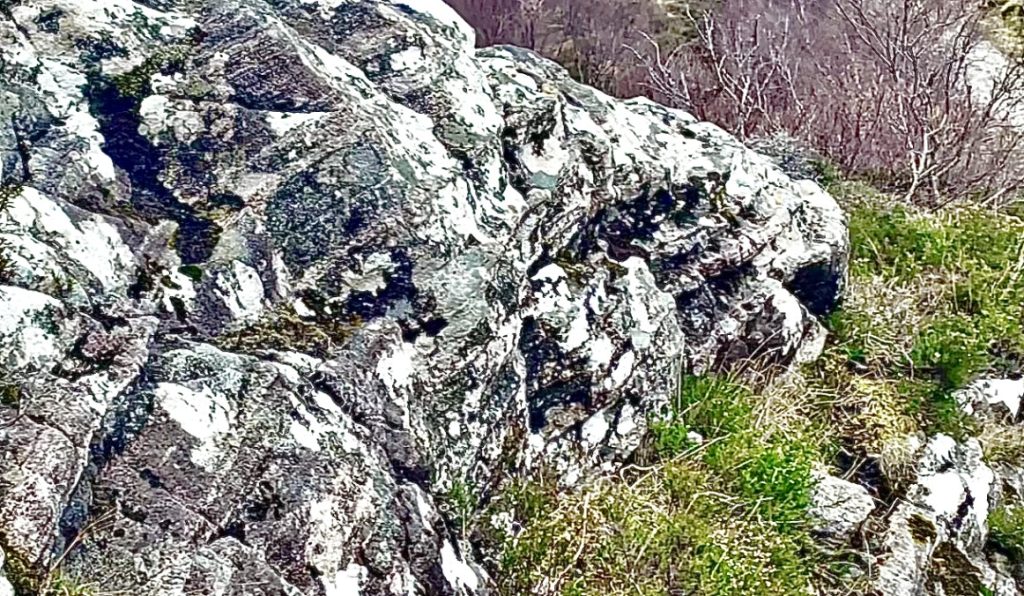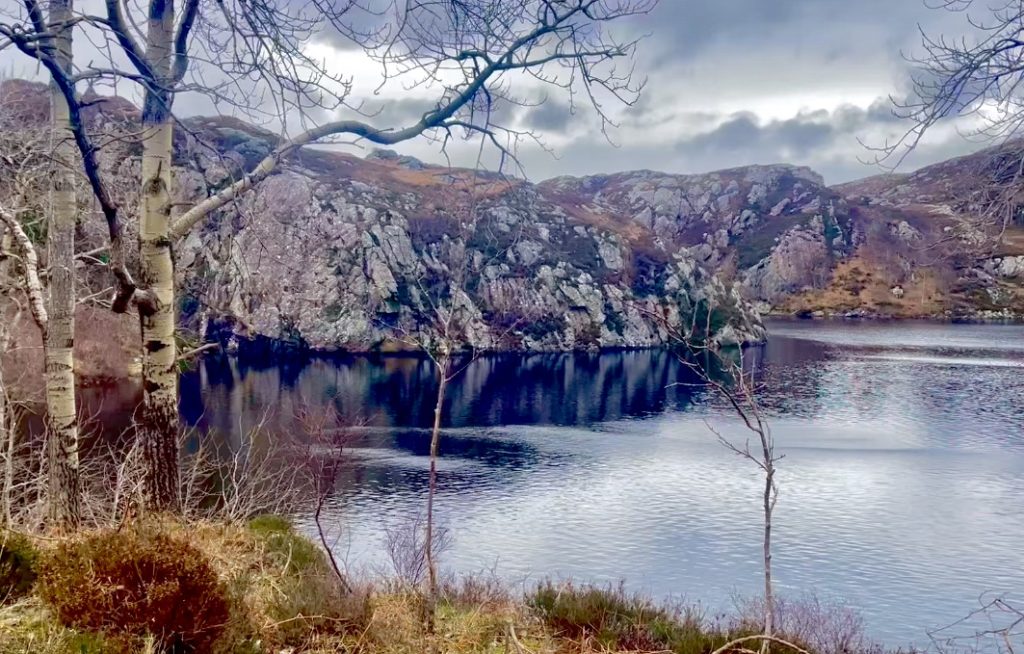Setting out from the An Cala Bunkhouse at Lochinver on a late March day, my intention was to complete a long yearned for trek across to the beach at Achmelvich.
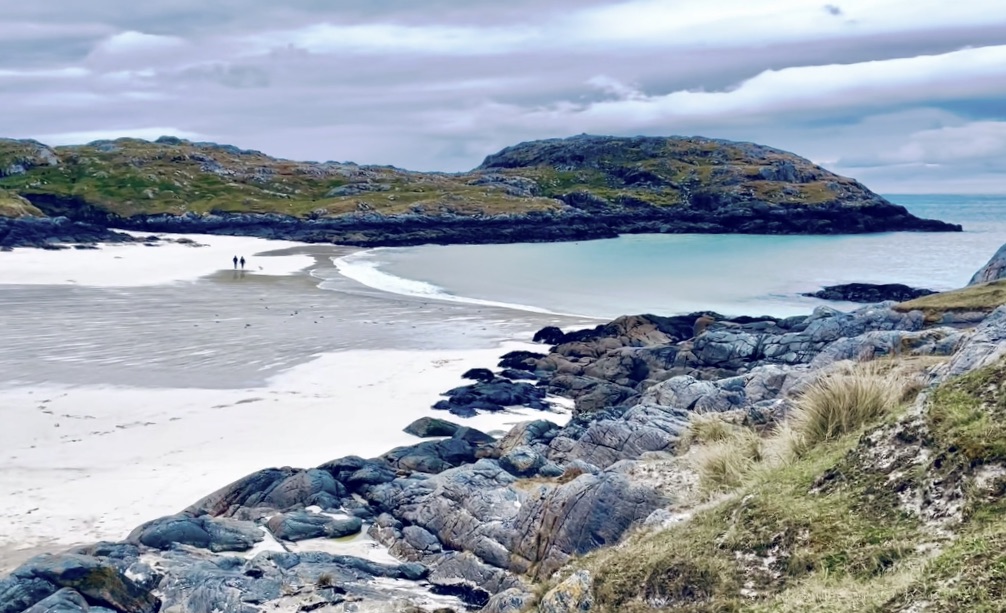
It’s known as one of the finest beaches in Britain, I’d been to Clachtoll, Old Shore More, even Sandwood to the North and Achiltibuie in Coigach, but never to Achmelvich.
It was a bright, cloudy day with a cold easterly blowing a few snow flurries westward.
Luckily, there was a cafe at the Park house rooms serving breakfast alongside the Loch (opposite the Lochinver bookshop). I got a few tips for the trek as well as one of the finest breakfasts ever with scrambled egg and local smoked salmon.
All was good and I was set for the trek of a lifetime. After crossing the Inver Bridge and following the road around the Loch past the Highland Pottery, then up the track to Glendarrach, I was on the way.
Once past Darrach Cottage the wooded path ahead was getting steeper. Resting a while at a clearing, then looking back over Lochinver I could see a snow capped Suilven towering above, seemingly so close, yet three or so miles away. It was from the summit a few years ago when I looked west to see the very land that I’d embarked on with a mission to find the shore at Achmelvich.
Walking on and out from the woods the full extent of the Assynt and Coigach skyline revealed itself with the peaks of Suilven (The Pillar), Cul Mohr (Big Ocean), Cul Beag, (Small back) and Stac Polleagh (Pinnacle of the hood), these being Gaelich names for the mountains given by the Vikings.
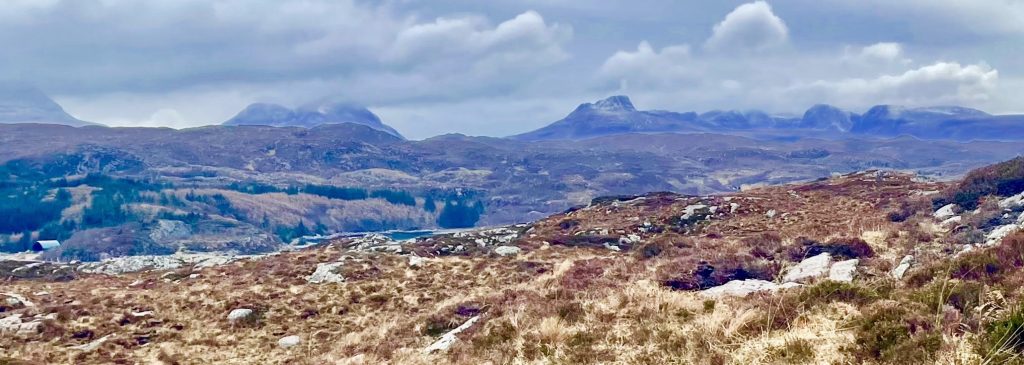
Over geological time the mountains have been formed of Torridonian sandstone where the bedrock is of Lewisian Gneiss, three billion years old, the oldest rocks of time.
The peaks have been protected with layers of Cambrian quartzite from another later geological time. They are named as Insel Bergs having been cut and crushed from the flows after the ice ages.
Walking on along these three billion year old rocks and past the lochan strewn landscape, there were a few buzzards around with a possible sighting of two divers taking off across one of the lonely lochans (black throat or more probably red throat).
From a high point the path led on through a small copse and an avenue of ancient hazel and stunted birch and down to an old croftship, Ardroe, with only two or three crofts surviving over time, even after the highland clearances.
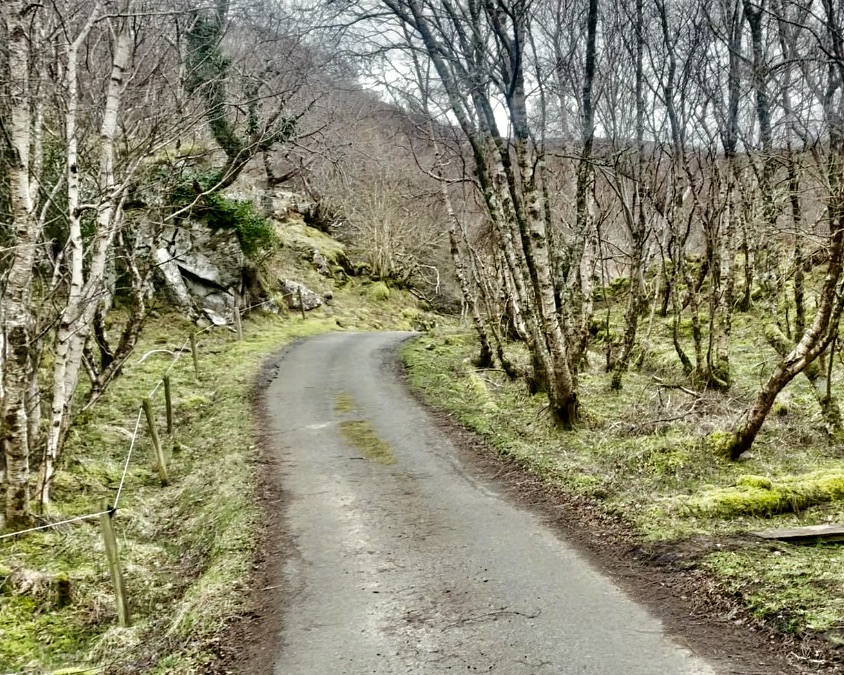
It was inspiring to read of the Coigach women who fought against possession of their homes, giving such resistance that the Duchy oppressors had to give up in the end.
Just wondering if Ardroe was one of those croftships that were part of the successful battle against the clearances. (I need another visit to find out more!)
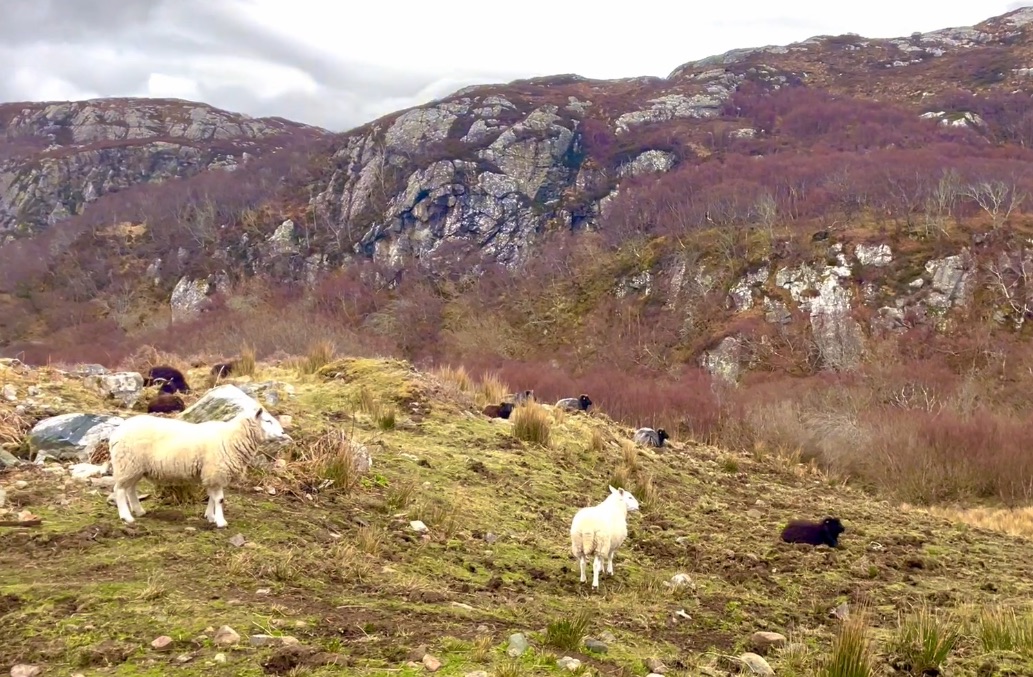
There was a small track leading away from Ardroe, cutting its way through a steep embankment cut from ancient rock and bearing the time scars of those billion year geological times. Just beneath and to the left Loch Dubh was a frightening sight, dark and deep (one of the deepest in Assynt ). How many secrets of the past might be hidden at its deepest depth going back millions of years or more?
Once out from the track there was a single road leading down towards Achmelvich.
To the west the sea loch (Loch Roe) stretched far below and out towards the Atlantic, there were a few seals just in sight, far below, swimming and playing around the small islands on the Loch.
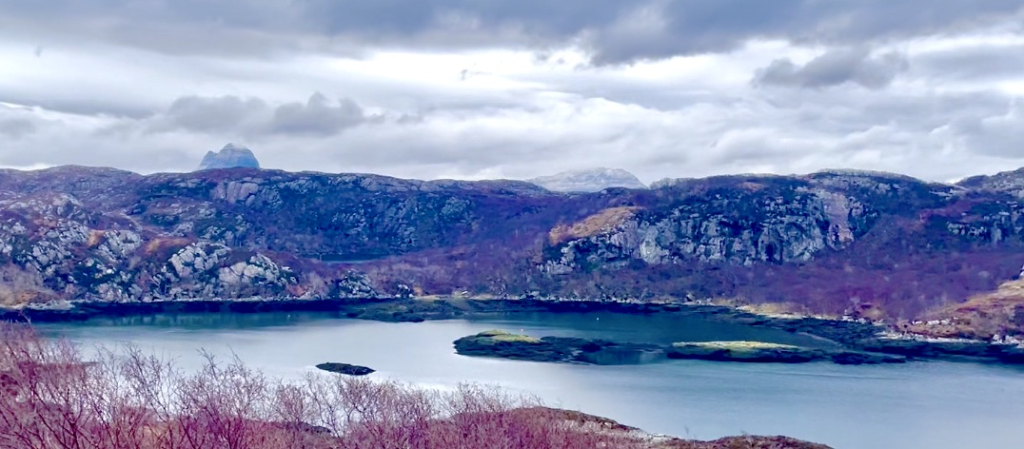
Down then towards the still invisible beach and along the sand dunes, a short scramble onto the top and across the marram grass and there, in full view, was the most magnificent beach with its full expanse of turquoise revealed at low tide. What a sight to behold and, yes, it is possibly the finest beach of Britain.
I just needed an hour or two to take it all in, still beautiful on a now cloudy dark day, the tide having turned with an incoming sea so calm, just steady ripples of waves calmly making their way across the silver sand.
Time then to set forth again as the rain set in for a wet return on the linear route back to Lochinver, it was a very wet return and into a strong now easterly wind, but, no matter, the time flashed by after the most exhilarating of March days.
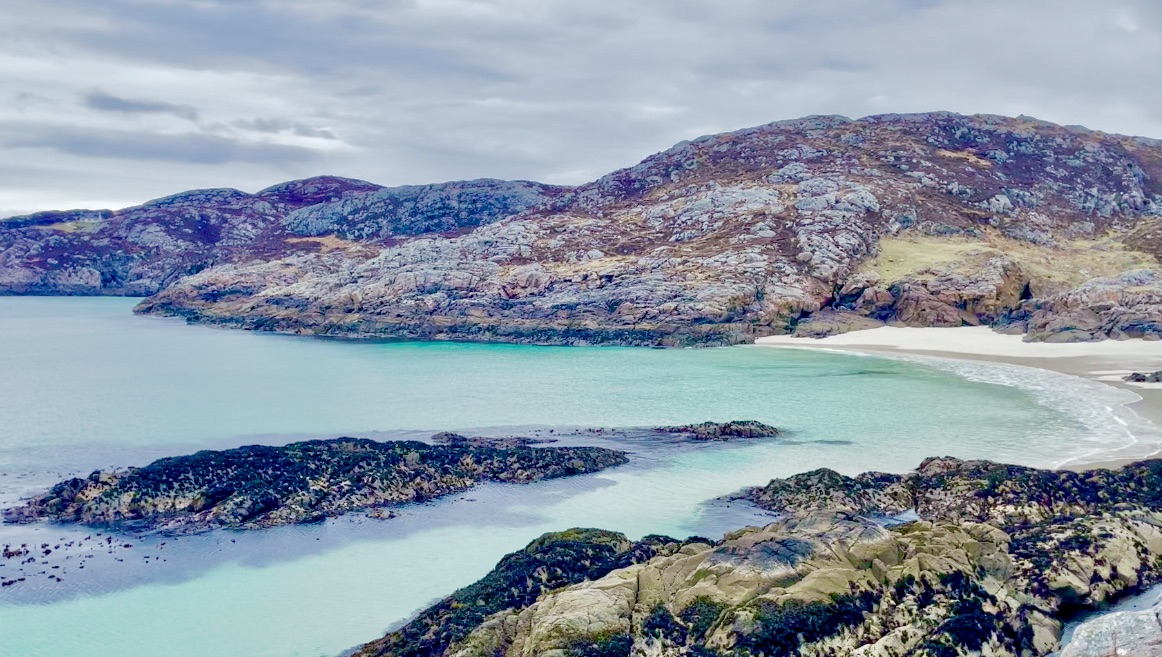
For more blogs on Scottish adventures written by Richard Langley see;
Walking across the Ardnish peninsula
https://blog.climbitrange.co.uk/eashness/
An Teallach
Suilven in Summer
Mid-summer Sunrise walk to the Summit of Goat Fell, Isle of Arran
Two days of winter walks on Jura

